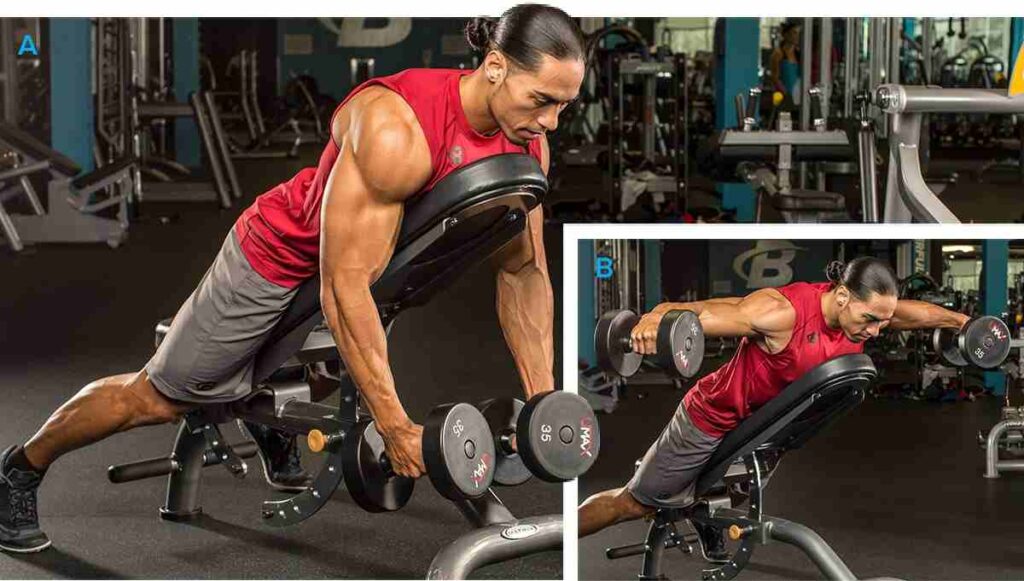Introduction
Welcome to our comprehensive guide on exercises for dislocated shoulders. Whether you’re recovering from a shoulder injury or aiming to strengthen your shoulder muscles, this article will provide you with a wealth of information and effective workouts. We’ll explore exercises specifically designed to promote shoulder stability, increase strength, and aid in the healing process. So, let’s dive in and discover how you can enhance your shoulder health!
Understanding Dislocated Shoulders
A dislocated shoulder occurs when the head of the upper arm bone (humerus) pops out of the shoulder socket (glenoid). It is a common injury that can result from a variety of causes, including falls, sports activities, or accidents. Dislocations can be partial or complete, with the latter being more severe.
SHOP FOR THE ADJUSTABLE DUMBBELL SET ON AMAZON
When a shoulder dislocates, the ligaments, tendons, and muscles that hold the joint together become stretched or torn. This leads to pain, swelling, limited mobility, and instability in the shoulder. It is important to seek immediate medical attention if you suspect a dislocated shoulder, as prompt treatment is crucial for proper healing and to prevent further damage.
Dislocations are more common in certain sports or activities that involve overhead movements, such as basketball, volleyball, swimming, and weightlifting. Additionally, individuals with loose or lax ligaments may be more prone to experiencing shoulder dislocations.
The recovery time for a dislocated shoulder can vary depending on the severity of the injury, the individual’s overall health, and their adherence to the prescribed rehabilitation program. In general, mild dislocations may heal within a few weeks, while more severe cases may require several months of rehabilitation.
Importance of Shoulder Strength
Shoulder strength is essential for maintaining optimal function and preventing injuries. Here are some key reasons why focusing on shoulder strength is crucial:
a) Injury Prevention: Strong shoulder muscles help stabilize the shoulder joint and prevent excessive movement that can lead to dislocations and other injuries. By strengthening the muscles around the shoulder girdle, you provide a solid foundation of support and reduce the risk of overextension or instability.
b) Enhanced Performance: Whether you’re an athlete or simply enjoy an active lifestyle, having strong shoulders can significantly improve your performance. Strong shoulder muscles enable better control and coordination during various activities, such as lifting weights, throwing a ball, swimming, or performing yoga poses. You’ll have increased power, endurance, and precision in your movements.
c) Posture and Alignment: The shoulders play a crucial role in maintaining good posture. Weak or imbalanced shoulder muscles can contribute to poor posture, rounded shoulders, and a forward head position. By strengthening the muscles responsible for proper shoulder alignment, you can improve your posture, reduce the risk of postural imbalances, and alleviate associated discomfort.
d) Daily Functional Movements: Strong shoulders are essential for performing everyday tasks with ease. Whether you’re lifting groceries, carrying a bag, or reaching overhead to grab an item from a shelf, having adequate shoulder strength ensures stability and minimizes strain on the joints. Strong shoulders allow for efficient and pain-free movement throughout your day.
e) Rehabilitation and Recovery: If you’ve experienced a dislocated shoulder or other shoulder injuries, targeted strength exercises play a pivotal role in the rehabilitation process. Strengthening the surrounding muscles aids in stability, promotes healing, and gradually restores range of motion. It’s crucial to work with a healthcare professional or qualified trainer to ensure proper exercise selection and progression during the recovery phase.
f) Overall Upper Body Strength: The shoulders are a key component of your upper body’s strength and functionality. Strong shoulders complement and support other muscle groups, such as the chest, back, and arms. A well-rounded and balanced upper body workout routine that includes shoulder-specific exercises will contribute to overall strength gains and promote muscular symmetry.
SHOP FOR THE BEST QUALITY RESISTANCE BAND ON AMAZON
Incorporating exercises for dislocated shoulders into your fitness regimen can provide numerous benefits, from injury prevention to improved performance and functionality. Remember to start at an appropriate level for your fitness and gradually progress under professional guidance. By prioritizing shoulder strength, you’ll unlock your potential for better health, increased mobility, and enhanced physical performance.
Exercises for Dislocated Shoulders
If you have experienced a dislocated shoulder, it is essential to consult with a healthcare professional or a physical therapist before attempting any exercises. They can provide a proper assessment of your condition and create a personalized rehabilitation plan for you. However, here are a few general exercises that might be included in a rehabilitation program for a dislocated shoulder:
1. Shoulder Stabilization Exercises
These exercises focus on improving shoulder stability and restoring proper alignment.
a) Scapular Squeezes
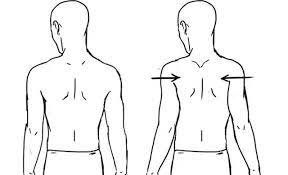
- Sit or stand with good posture, gently squeeze your shoulder blades together.
- Hold the squeeze for 5-10 seconds, then release.
- Repeat for 10-15 repetitions.
b) Isometric Internal Rotation
- Place a towel between your side and the wall.
- Press your hand into the towel, attempting to rotate your arm inward.
- Hold for 5-10 seconds, then relax.
- Repeat 10-15 times on each side.
c) Plank Shoulder Taps
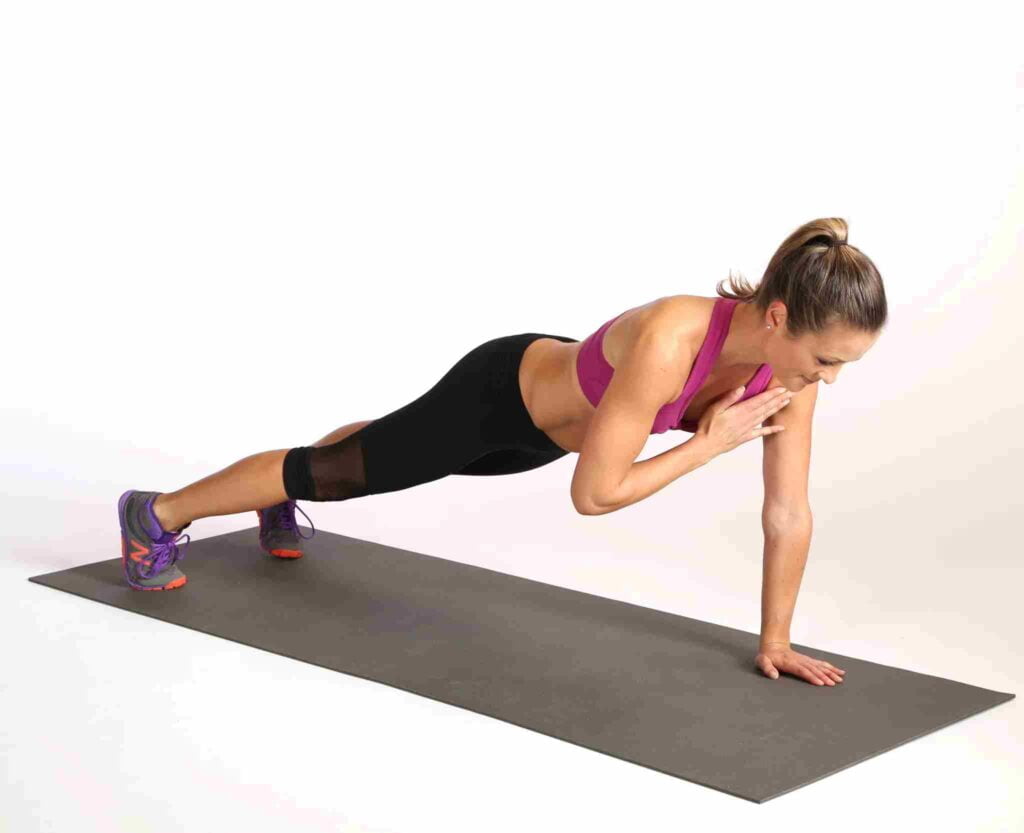
- Begin in a high plank position, ensuring your body forms a straight line.
- Lift one hand and touch the opposite shoulder, then alternate sides.
- Perform 10-15 taps on each side, focusing on stability.
2. Strength-Building Exercises
These exercises aim to strengthen the muscles around the shoulders, improving overall stability and reducing the risk of future dislocations.
a) Push-ups
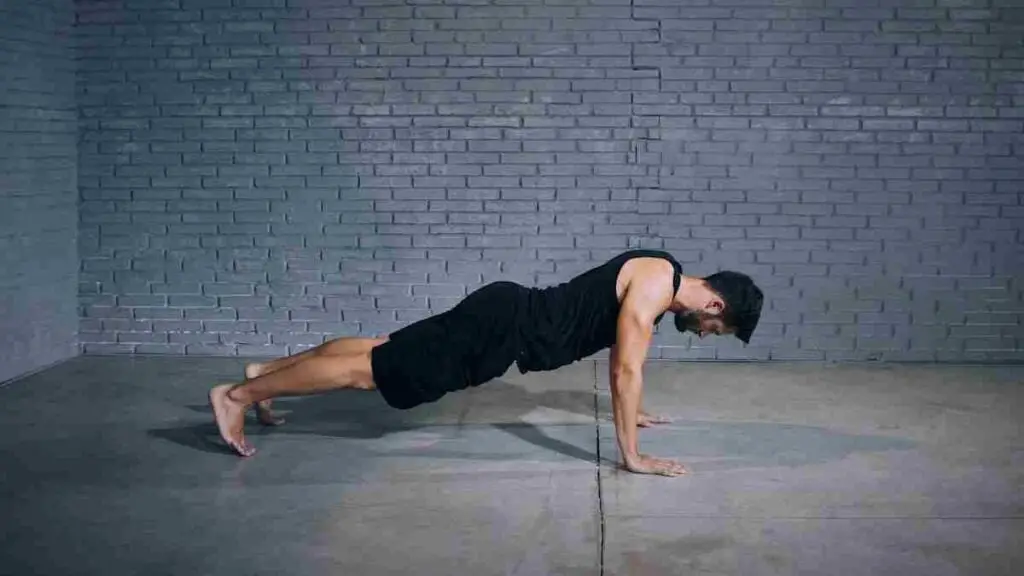
- Assume a plank position with your hands shoulder-width apart.
- Lower your body until your chest nearly touches the floor, then push back up.
- Start with modified push-ups if needed, gradually progressing to standard push-ups.
- Aim for 10-15 repetitions.
b) Dumbbell Shoulder Press
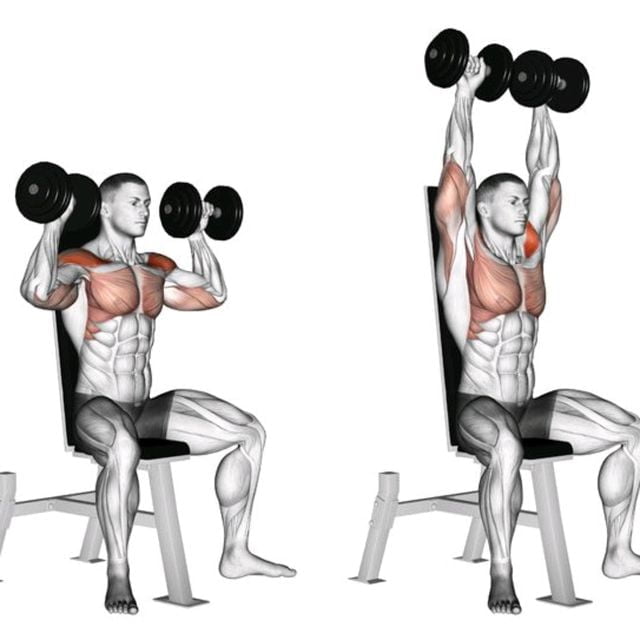
- Sit on a bench with a dumbbell in each hand, positioned at shoulder height.
- Push the weights overhead, extending your arms fully.
- Lower the dumbbells back to the starting position.
- Perform 10-12 repetitions, gradually increasing weight as your strength improves.
c) Bent-Over Rows
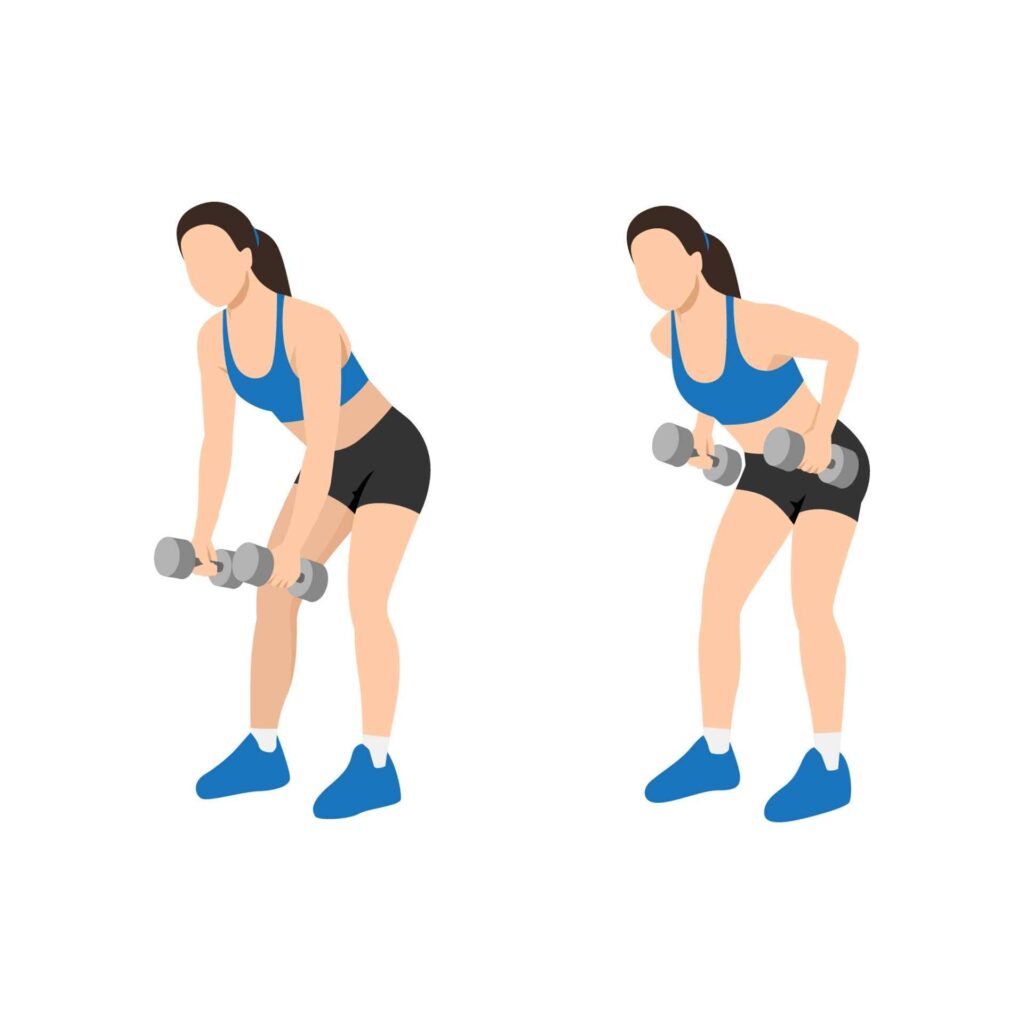
- Hold a dumbbell in each hand, palms facing your body.
- Bend your knees slightly and hinge forward from your hips.
- Pull the weights up toward your chest, squeezing your shoulder blades together.
- Perform 10-12 repetitions, focusing on maintaining proper form.
3. Range of Motion Exercises
These exercises help improve flexibility and restore the range of motion in your shoulder joint.
a) Pendulum Swing
- Stand beside a table or chair and lean forward, resting your unaffected hand on the surface.
- Allow your affected arm to hang freely, and gently swing it forward and backward.
- Perform 10-15 swings in each direction, gradually increasing the range of motion.
b) Wall Climbs
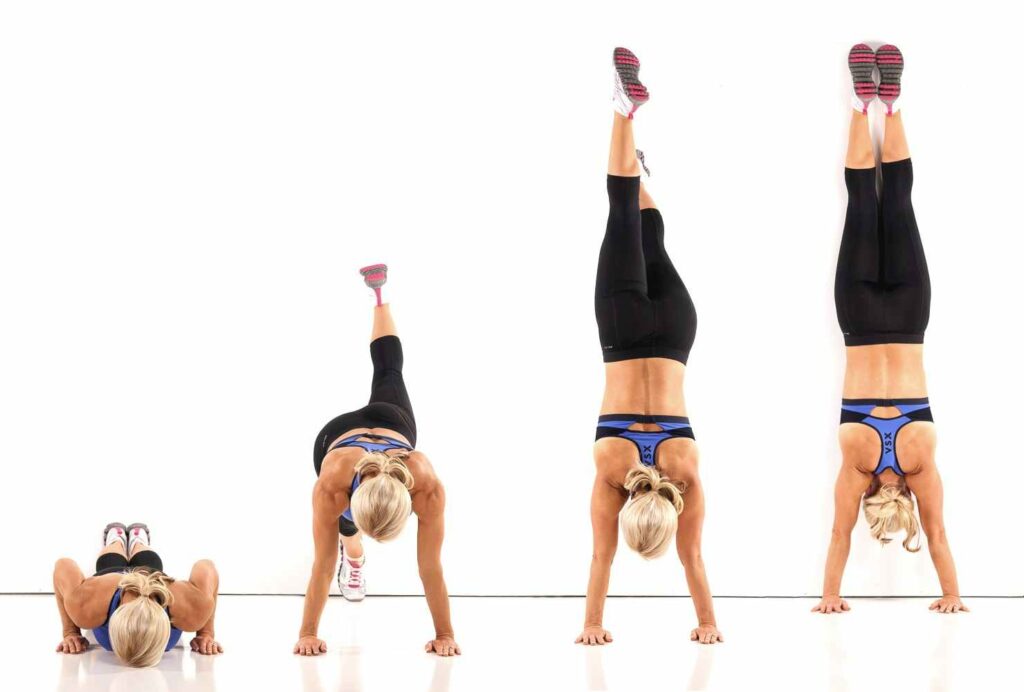
- Stand facing a wall with your affected arm extended and fingertips touching the wall.
- Slowly walk your fingers up the wall as far as comfortable, then reverse the motion.
- Repeat 10-15 times, focusing on a smooth and controlled movement.
4. Resistance Band Workouts
Resistance bands are excellent tools for rehabilitating and strengthening dislocated shoulders.
SHOP FOR A SHOULDER STABILITY BRACE ON AMAZON
a) External Rotation
- Attach a resistance band to a sturdy anchor point at waist height.
- Stand sideways with your affected arm holding the band, elbow bent 90 degrees.
- Rotate your forearm outward against the resistance of the band.
- Perform 10-12 repetitions on each side.
b) Shoulder Abduction
- Stand with your feet shoulder-width apart, placing the resistance band under both feet.
- Grasp the band with your affected arm, keeping your palm facing your body.
- Start with your arm at your side and slightly bent at the elbow.
- Lift your arm out to the side, away from your body, while maintaining tension in the band.
- Focus on engaging the shoulder muscles and avoiding any pain or discomfort.
- Slowly lower your arm back to the starting position.
- Perform 10-12 repetitions of this exercise, gradually increasing the resistance band’s tension as your strength improves.
Workouts for Bigger and Wider Shoulders
In addition to exercises specifically targeting dislocated shoulders, many individuals aim to develop bigger and wider shoulders for aesthetic and functional purposes. Here are some effective workouts to help you achieve those goals:
a) Overhead Press
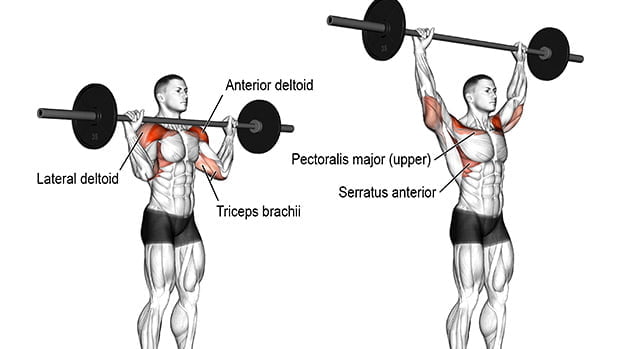
- Stand with your feet shoulder-width apart, holding a barbell or dumbbell at shoulder height.
- Press the weight overhead, fully extending your arms.
- Lower the weight back to the starting position.
- Aim for 8-10 repetitions, gradually increasing the weight as you progress.
b) Lateral Raises
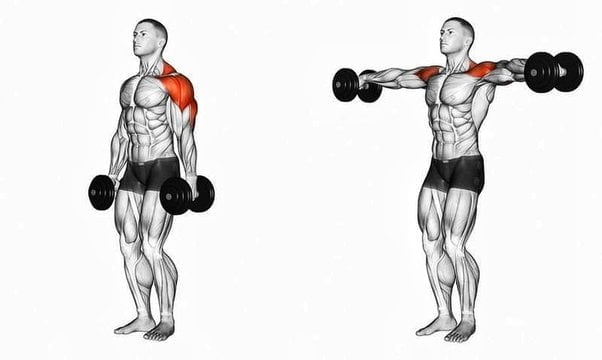
- Stand with your feet hip-width apart, holding dumbbells by your sides.
- Keeping a slight bend in your elbows, raise the weights out to the sides until they are parallel to the floor.
- Slowly lower the dumbbells back to the starting position.
- Perform 10-12 repetitions, focusing on controlled movements.
c) Arnold Press
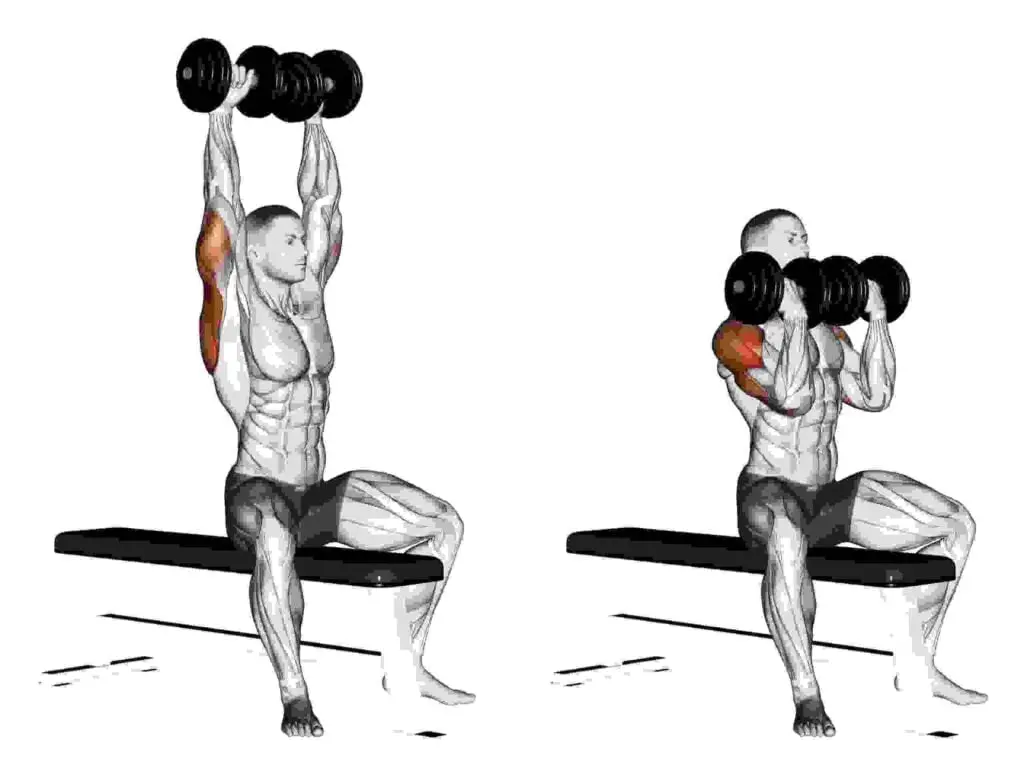
- Sit on a bench with a dumbbell in each hand, starting with your palms facing you.
- Press the weights overhead, rotating your palms away from your body as you lift.
- Reverse the motion, rotating your palms back toward you as you lower the weights.
- Aim for 8-10 repetitions, maintaining proper form throughout.
d) Upright Rows
- Stand with your feet shoulder-width apart, holding a barbell or dumbbells in front of your thighs.
- Pull the weight upward, leading with your elbows, until it reaches chin height.
- Lower the weight back down in a controlled manner.
- Perform 8-10 repetitions, focusing on engaging your shoulder muscles.
e) Front Raises
- Stand with your feet hip-width apart, holding dumbbells in front of your thighs.
- Lift one arm straight out in front of you, keeping a slight bend in your elbow.
- Slowly lower the dumbbell back down and repeat on the other side.
- Perform 10-12 repetitions on each side, alternating between arms.
f) Dumbbell Shrugs
- Stand with your feet hip-width apart, holding dumbbells at your sides.
- Lift your shoulders up toward your ears, squeezing your shoulder blades together.
- Hold the contraction for a moment, then lower the weights back down.
- Perform 10-12 repetitions, focusing on the contraction of your shoulder muscles.
g) Bent-Over Reverse Flyes
- Stand with your feet hip-width apart, holding dumbbells in front of your thighs.
- Hinge forward from your hips, keeping your back flat and core engaged.
- With a slight bend in your elbows, lift the weights out to the sides, squeezing your shoulder blades together.
- Lower the dumbbells back down with control.
- Aim for 8-10 repetitions, focusing on proper form and engaging the back of your shoulders.
h) Barbell Front Raises
- Stand with your feet shoulder-width apart, holding a barbell with an overhand grip in front of your thighs.
- Keeping a slight bend in your elbows, lift the barbell straight out in front of you until it reaches shoulder height.
- Lower the weight back down in a controlled manner.
- Perform 10-12 repetitions, focusing on maintaining stability and engaging your front shoulder muscles.
SHOP FOR THE EXERCISE BALL ON AMAZON
Remember, consistency and gradual progression are key when aiming for bigger and wider shoulders. Incorporate these exercises into your routine 2-3 times per week, allowing for adequate rest and recovery between sessions. It’s also important to maintain proper form and listen to your body to prevent any undue strain or injury.
FAQs
Q.1 How long does it take for dislocated shoulders to heal?
Ans. The healing time for dislocated shoulders can vary depending on the severity of the injury, individual factors, and adherence to rehabilitation protocols. On average, it may take several weeks to a few months for the shoulder to fully heal. However, it’s important to consult with a healthcare professional to receive an accurate assessment and personalized treatment plan.
Q.2 Can I exercise with a dislocated shoulder?
Ans. It is essential to consult with your healthcare provider before starting any exercise regimen if you have a dislocated shoulder. In some cases, rest and limited movement may be initially recommended to allow the shoulder to heal properly. Once you have received medical clearance, your healthcare provider or a certified trainer can guide you in performing appropriate exercises to aid in your recovery and prevent further injury.
Q.3 What precautions should I take when performing shoulder exercises?
Ans. When engaging in shoulder exercises, especially with a history of dislocated shoulders, it is crucial to prioritize safety and proper technique. Here are a few precautions to keep in mind:
- Start with gentle range-of-motion exercises and gradually progress to more challenging movements.
- Pay attention to your body’s signals and avoid any exercises that cause pain or discomfort.
- Warm up adequately before each workout session to prepare your muscles and joints.
- Use proper form and technique to ensure the targeted muscles are being engaged effectively.
- Do not overexert or overload your shoulders, especially when lifting weights. Gradually increase the resistance as your strength improves.
- If you experience any unusual symptoms or persistent pain during or after exercise, consult your healthcare provider for evaluation and guidance.
Remember, individual circumstances can vary, so it’s crucial to seek professional advice to develop a tailored exercise plan that suits your specific needs.
Q.4 Are there any specific exercises I should avoid with a dislocated shoulder?
Ans. Avoid heavy overhead presses, behind-the-neck exercises, dips, and exercises involving excessive external rotation.
Q.5 Can I engage in sports or activities after a dislocated shoulder?
Ans. Yes, but do so cautiously and under professional guidance to minimize the risk of re-injury.
Q.6 Should I continue with shoulder exercises even after my shoulder has healed?
Ans. Yes, maintaining shoulder strength is important to prevent future injuries and maintain optimal function.
Q.7 Are there any alternative therapies or treatments that can complement exercises for dislocated shoulders?
Ans. Physical therapy, manual therapy, heat/cold therapy, and assistive devices can complement exercises for shoulder rehabilitation.
Conclusion
Incorporating appropriate exercises for dislocated shoulders is essential for promoting shoulder stability, strength, and overall recovery. By engaging in shoulder stabilization exercises, strength-building workouts, range-of-motion exercises, and resistance band workouts, you can effectively enhance your shoulder health and reduce the risk of future injuries.
Additionally, if your goal is to develop bigger and wider shoulders, incorporating exercises such as overhead presses, lateral raises, Arnold presses, upright rows, and front raises can help you achieve those aesthetic goals. Remember to focus on proper form, gradually increase the intensity and weight, and listen to your body’s needs.
Always consult with a healthcare professional or certified trainer before starting any new exercise routine, especially if you have a history of dislocated shoulders. By taking the necessary precautions and following expert guidance, you can embark on a journey toward improved shoulder strength, functionality, and overall fitness.

Good day, and welcome to Fitthour. My name is Shubham Vijay, and I am a certified personal trainer and nutrition coach with 6 years of experience in the fitness industry. At Fitthour, we specialize in types of training, such as strength training, cardio, or HIIT, and our mission is to help clients achieve their fitness goals and improve their overall health.



